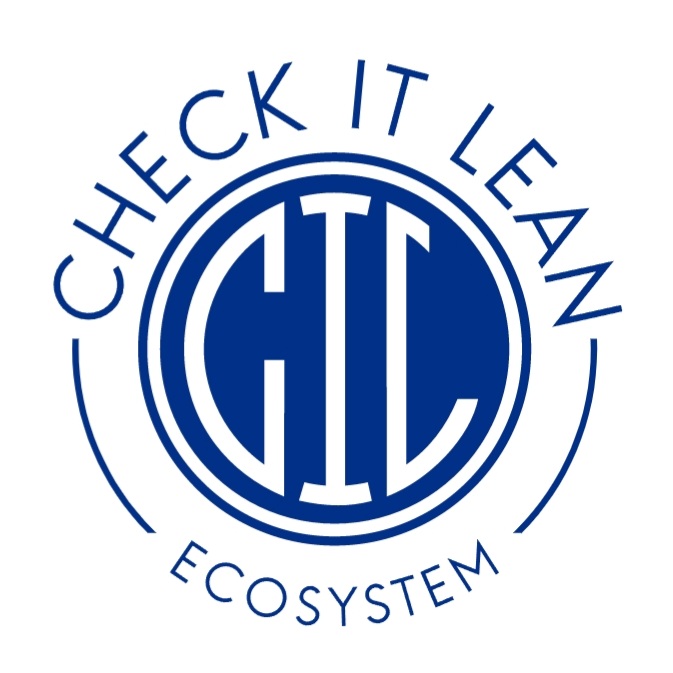
KNOWLEDGE POOL

Knowledge Pool
5S
Organization of the work area. Basis for continuous improvement.
- Sort (eliminate that which is not needed)
- Set In Order (organize remaining items)
- Shine (clean and inspect work area)
- Standardize (write standards for above)
- Sustain (regularly apply the standards)
7+1 Wastes
The seven + one wastes of Lean Manufacturing are what we are aiming to remove from our processes.
1. Waiting
2. Over Production
3. Rejects
4. Motion
5. Processing
6. Inventory
7. Transport
8. Unused Ideas + missing information
A3
A standardized tool for using the PDCA logic. The structured approach should lead to better root cause analysis and correct definition and implementation of actions in order to solve the problem.
Andon
Visual feedback system that indicates the production status, alerts when assistance is needed and empowers operators to stop the production process.
Bottleneck Analysis
Identify which part of the manufacturing process limits the overall throughput and improve the performance of that part of the process.
Continuous Flow
Manufacturing where work-in-process smoothly flows through production with minimal and defined (or even zero) buffers between steps of the manufacturing process.
Gemba (The Real Place)
A philosophy that reminds us to get out of our offices and spend time on the shop floor - the place where real action occurs.
Heijunka (Levelling)
A form of production scheduling that purposely manufactures in much smaller batches by sequencing (mixing) product variants within the same process.
Jidoka (Autonomation)
Design equipment to partially automate the manufacturing process (partial automation is typically much less expensive than full automation) and to automatically stop when defects are detected.
Just-In-Time (JIT)
Pull parts through production based on customer demand instead of pushing parts through production based on projected demand. Relies on many lean tools, such as Continuous Flow, Heijunka, Kanban, Standardized Work and Takt Time. The purpose is reduced lead time and inventory and according to this reduced capital lockup.
Just-In-Sequence (JIS)
A more sophisticated development of Just-in-time with a delivery in sequence of the assembly of the customer. The processes must be stable to avoid delivery problems as there are nearly no stocks.
Kaizen (Continuous Improvement)
A strategy where employees work together proactively to achieve regular, incremental improvements in the manufacturing process. Meaning: change ("kai") to a better ("zen") situation.
Kanban (Pull System)
A method of regulating the flow of goods both within the factory and with outside suppliers and customers. Based on automatic replenishment through signals that indicate when more goods are needed. Translation: Card, board, document ("Kanban").
KPI (Key Performance Indicator)
Metrics designed to track and encourage progress towards critical goals of the organization. Strongly promoted KPIs can be extremely powerful drivers of behavior - so it is important to carefully select KPIs that will drive desired behavior.
Line Balancing
Balancing the workload of the operation as much as possible to the Takt time to avoid bottleneck stations (workload is more than takt time) or waiting times (workload is less than takt time). This approach should lead to maximum efficiency and lowest capital expenses.
Muri, Mura, Muda (3Ms)
Anything in the process that does not add value from the customer's perspective. Common literature distinguish between three kind of wastes: Muri (Overload) Mura (Imbalance) and Muda (Waste, 7 types of waste)
Overall Equipment Effectiveness (OEE)
Framework for measuring productivity loss for a given manufacturing process. Three categories of losses are tracked: Availability (e.g. down time), Performance (e.g. slow cycles), Quality (e.g. rejects). The definition for OEE is customized and adapted for each company.
PDCA (Plan, Do, Check, Act)
An iterative methodology for implementing improvements:
- Plan (establish plan and expected results)
- Do (implement plan)
- Check (verify expected results achieved)
- Act (review and assess; do it again)
Poka-Yoke (Error Proofing)
Design error detection and prevention into production processes with the goal of achieving zero defects.
Root Cause Analysis
A problem solving methodology that focuses on resolving the underlying problem instead of applying quick fixes that only treat immediate symptoms of the problem. A common approach is to ask the five times why- each time moving a step closer to discovering the root cause.
Single Minute Exchange of Dies (SMED)
Reduce setup (changeover) time to less than 10 minutes. Techniques include:
- Convert setup steps to be external (performed while the process is running)
- Simplify internal setup (e.g. replace bolts with knobs and levers)
- Eliminate non-essential operations
- Create standardized work instructions
In processes like Just-in-sequence production a change-over within one Takt is the goal to have a high flexibility.
Six Big Losses
Six categories of productivity loss that are almost universally experienced in manufacturing:
1/ Breakdowns
2/ Setup/Adjustments
3/ Small Stops
4/ Reduced Speed
5/ Startup Rejects
6/ Production Rejects
Standardized Work
Documented procedures for manufacturing that capture best practices (including the time to complete each task). Must be "living" documentation that is easy to change.
Takt Time
The pace of production (e.g. manufacturing one piece every 34 seconds) that aligns production with customer demand. Calculated as Planned Production Time / Customer Demand.
Total Productive Maintenance (TPM)
A comprehensive approach that focuses on proactive and preventative maintenance to maximize the OEE. With TPM the borders of maintenance and production will be broken up by placing a strong emphasis on empowering operators to help maintain their equipment.
Toyota Production System (TPS)
A manufacturing strategy developed by Toyota Motor Corporation of Japan over a period of many years. TPS focuses on reduction of lead time by elimination/reduction of wastes and is the progenitor of lean manufacturing.
Value Stream Mapping (VSM) / Value Stream Design (VSD)
This tool is used to visually map the process, material and information flow in one big picture. Shows the current (VSM) and future state (VSD) of processes in a way that highlights opportunities for improvement.
Visual Management
Visual indicators, displays and controls used throughout manufacturing plants to improve communication of information. Examples: floor marking, lights, signs, KPIs boards, min/max signs, andon signals, etc.)
Innovation
The success of a Business depends for the most part on timing, followed by the quality of the team and then the existence of excellent basic ideas.
From 2017, Businesses have come up with a growing demand for Continuous Improvement. Businesses have faced a steady increase in Customer Demand while reducing development and manufacturing costs. Today, a new innovative manufacturing system based on LEAN-based manufacturing is emerging. This growth and development cannot be sustained without commitment, expertise, accuracy and creativity. Properly documented measures, quick response to production and technology problems, consistent daily inspections, follow-up will bring the expected results and your Business will "Enter the Future"!
Six Sigma
SIX SIGMA is not a LEAN, but a tool for Continuous Improvement to increase efficiency and reduce costs. Six Sigma is a corporate philosophy that focuses on structured problem solving and quality improvement activities that reduce the number and proportion of ongoing errors and losses to zero.
The Six Sigma method consists of 5 steps: Define, Measure, Analyze, Improve, Control = DMAIC.
During development, Sigma is measured, ie the variability and standard deviation of the process. A process is better the smaller the standard deviation and the larger the Sigma.
The drive for continuous improvement has created indicators that clearly describe the outcome of the quality of the processes: PPM (Parts Per Million), DPMO (Defect Per Million Opportunities).
PPM means: The number of defective products in one million manufactured products.
DPMO means: The number of errors per million possible errors.
This allows us to measure all the processes where an error can be made.
SIX SIGMA should be seen as a milestone in the development process to show the direction and direction of development.
CHECK IT LEAN - Engineering Solutions
